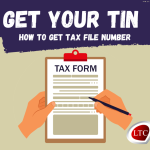Australia’s tax system is a combination of federal and state taxes. The federal government collects income tax, the Goods and Services Tax (GST), and other smaller levies. State and territory governments raise revenue through various taxes, with the most significant being payroll tax.
Income Tax:
Australia uses a progressive income tax system, meaning tax rates increase as your taxable income rises. Here’s a breakdown of the tax brackets for individuals in the 2023-24 financial year:
- Tax-Free Threshold: Up to $18,200 of income is tax-free.
- Low Income Bracket: For income between $18,201 and $45,000, you pay 19 cents for each dollar over $18,200.
- Middle Income Bracket: Income between $45,001 and $120,000 is taxed at $5,092 plus 32.5 cents for each dollar over $45,000.
- High Income Bracket: Income exceeding $120,001 is taxed at $29,467 plus 37 cents for each dollar over $120,000.
Goods and Services Tax (GST):
The GST is a broad-based consumption tax of 10% applied to most goods and services sold or consumed in Australia. It’s generally included in the price you pay at the register.
Other Taxes:
There are various other federal and state taxes, including:
- Medicare Levy: A levy to help fund Australia’s healthcare system.
- Medicare Levy Surcharge: Applies to high-income earners who don’t have private health insurance.
- Fringe Benefits Tax: Taxed on certain benefits employers provide to employees, like cars or gym memberships.
- Payroll Tax: A state-based tax on wages paid by employers.
Resources for Further Information:
For a more comprehensive understanding of the Australian tax system and tax rates, you can refer to the following resources:
- Australian Taxation Office (ATO): https://www.ato.gov.au/
- Treasury Department: https://treasury.gov.au/review/tax-white-paper






![VAT & SVAT Registration requirements for Tea, Rubber, and Coconut Suppliers – SEC/2024/E/01 [04 Jan 2023]](https://lankataxclub.lk/wp-content/uploads/2024/02/Can-Tea-Rubber-and-Coconut-Suppliers-get-SVAT-150x150.jpg)





